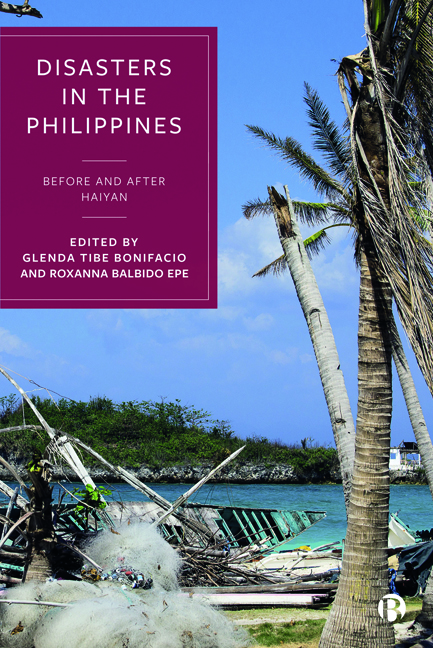2 - Socio-Economic Impact of Disasters in the Philippines: The First Two Decades of the 21st Century
Published online by Cambridge University Press: 18 January 2024
Summary
Introduction
The Philippines is an island country in Southeast Asia surrounded by the Pacific Ocean. An archipelago made up of 7,107 islands, the Philippines’ location in the Pacific Ring of Fire make it a country prone to earthquakes, while its tropical climate makes it vulnerable to typhoons (Alcayna et al et al 2016). In 2017, the Philippines had an estimated population of 102 million inhabitants, which placed it as the 12th most populous country in the world (World Bank 2019). Its biodiversity is one of the world's richest, and its growing industrialization process has led to the replacement of agricultural activity by the manufacture of industrialized products and services (World Bank 2019). However, the Philippines faces numerous challenges linked to, among other things, the lack of access to education, health services, and human development for large sectors of its population (United Nations Development Program 2019, 76).
The Philippines is one of the top three countries with the highest exposure to disaster risks (UN Office for Disaster Risk Reduction 2019, 6), among which typhoon Haiyan stood out in November of 2013. The Haiyan disaster resulted in 7,354 deaths, affected 16,106,870 people (requiring immediate assistance), and caused an estimated economic loss of more than US$10 billion (Centre for Research on the Epidemiology of Disasters 2019). There are also earthquakes and permanent volcanic activity in the Philippines due to the presence of 53 volcanoes, including the Mayón Volcano, which is one of the most active in the world (Centre for Research on the Epidemiology of Disasters 2019). These major disasters have cumulative impacts on the population, not only in terms of deaths but also in their social and economic effects.
In economic terms, the average annual loss due to multiple risks for the Philippines is estimated at over US$7 billion, which is equivalent to 69% of the country's social spending in 2011 (Alcayna et al 2016, 2). Although the Philippines recorded a GDP of US$330.91 billion that placed it in 39th position in the world in 2018 (World Bank 2019), the United Nations Human Development Report placed it in the 106th place in 2018, with a Human Development Index (HDI) of 0,712 (United Nations Development Program 2019, 301).
- Type
- Chapter
- Information
- Disasters in the PhilippinesBefore and After Haiyan, pp. 25 - 46Publisher: Bristol University PressPrint publication year: 2023



